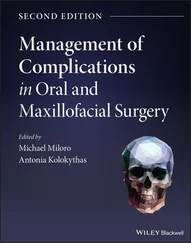Structure of Maturation-Stage Ameloblasts
During the maturation stage, water and enamel matrix degradation products are removed from the enamel, and mineralization continues until the final enamel achieves a composition (by weight) of 95% mineral and only 4% water and 1% organic matrix. 26, 114Biochemical analysis of enamel indicates that there is a rapid loss of matrix during the initial phase of maturation. Prior to this stage, the enamel is soft and porous, and the crystallites have yet to grow to their final thickness. 115During the final stages of the maturation process, water is lost as mineral continues to be added to the growing crystallites. Ever-smaller quantities of matrix proteins are released and removed by the maturation ameloblasts until the enamel reaches its mature state prior to eruption.
Maturation ameloblasts (and perhaps the secretory ameloblasts) contribute proteolytic enzymes that are involved in an extracellular enzymatic cleavage of matrix proteins into small peptides prior to removal by endocytosis. 84, 116, 117One such enzyme is enamelysin, a matrix metalloproteinase (MMP-20) that degrades amelogenin. 59A serine proteinase (ameloprotease) capable of degrading the entire amelogenin molecule has been isolated from pig enamel matrix. 69, 118Membrane-type matrix metalloproteinase (MT-MMP) is also expressed in ameloblasts. 119It has been suggested that MT-MMP might function as an activator of extracellular MMPs close to the cell surface during enamel maturation.
Enamel maturation is more time consuming than the preceding secretory stage. Maturation ameloblasts remain in contact with the enamel surface for approximately two thirds more time than do the secretory ameloblasts. Failure of enamel maturation leads to the eruption of enamel that is relatively soft, porous, and easily discolored by food and/or blood and serum.
On completion of the transition phase, maturation ameloblasts develop a ruffled border, a zone of cytoplasmic folds and invaginations along the distal end of the cell in contact with the enamel (see Figs 3-9and 3-10). 120– 122Freeze-fracture studies of maturation ameloblasts have revealed a high concentration of intramembrane particles, indicative of possible transport and/or receptor-ligand activity at the distal surface. 123Maturation ameloblasts cycle between distal ruffle-ended and smooth-ended morphotypes (see Fig 3-9). 124– 126
Maturation ameloblasts have well-developed Golgi complexes that contain many lysosomal vesicles. Morphologic, tracer, and autoradiographic evidence suggests that resorption of the enamel matrix occurs from the zone of the ruffled border. 29, 127, 128Unlike secretory ameloblasts, the maturation ameloblasts produce a basal lamina over the surface of the maturing enamel. 129Matrix degradation fragments must traverse the basal lamina prior to undergoing endocytosis at the ruffled border. Endocytosis of granular material within vesicles formed in the invaginations of the distal cytoplasm has been observed in all species that have been studied at the electron microscopic level. Additional high-resolution immunocytochemical studies have shown that endocytotic vesicles and secondary lysosomes contain material that reacts with antibodies raised against amelogenin proteins. 128
It is not known if all amelogenin peptide fragments are removed via the cytoplasmic route or whether some of the small peptides simply diffuse out of the enamel and the enamel organ without passing through the maturation ameloblasts. 130The presence of distal zonula occludens junctions between adjacent ruffle-ended maturation ameloblasts suggests that a direct intercellular diffusion pathway is blocked to the free flow of substances from the enamel, at least beneath the ruffled border (see Fig 3-9). 111, 131The absence of a proximal zonula occludens between ruffle-ended maturation ameloblasts and the absence of a distal zonula occludens between the smooth-ended maturation ameloblasts, however, permit diffusion of peptides from enamel into the intercellular spaces between the smooth-ended maturation ameloblast (see Fig 3-9). From there, degradation products could gain access to the intercellular spaces of the papillary layer by lateral movement through the spaces between the ruffle-ended maturation ameloblasts (see Fig 3-9). This indirect pathway between maturation-phase enamel and the papillary layer and its blood vessels has been demonstrated by the diffusion of tracers. 26
A similarity between the activity of ruffle-ended maturation ameloblasts and osteoclastic resorption of bone matrix has been noted. Mannose-6-phosphate receptors for lysosomal enzymes are present on the ruffle-ended membranes of both cell types, suggesting that the ruffled border of the ameloblast is a target for outward transport of lysosomal enzymes. 132Positive immunocytochemical reactivity for cathepsin B in the distal ends of ruffle-ended ameloblasts confirms lysosomal enzyme transport to that location. 89
In addition to resorption of matrix, the ruffle-ended ameloblasts engage in the transport of calcium into the maturing enamel (see Fig 3-11). 133With the onset of maturation, there is a relatively sharp drop in matrix protein followed by an increase in the rate of mineral incorporation into the enamel. Peaks of mineral acquisition are associated with the presence of the ruffle-ended ameloblasts. 132, 134, 135High levels of calcium-ATPase activity in the ruffle-ended membranes of ruffle-ended ameloblasts appear related to the transport of calcium. 98
Alkaline phosphatase activity is high in the ruffled border of maturation ameloblasts. 136It has been suggested that alkaline phosphatase may generate PO 4, required during formation of hydroxyapatite. Smooth-ended ameloblasts, in contrast to ruffle-ended ameloblasts, occupy less surface area on the tooth surface, exhibit less intense alkaline phosphatase and calcium-ATPase activity, and are not correlated to areas of calcium incorporation.
Histochemical and immunocytochemical studies have also shown that the ruffle-ended maturation ameloblasts contain proton pumps (H +-ATPase) and carbonic anhydrase. 137, 138It has been proposed that protons generated by carbonic anhydrase activity are transported into the enamel across the membranes of the ruffled border by H +-ATPase (see Fig 3-11). The resulting decrease in pH beneath the ruffle-ended ameloblasts might activate proteolytic enzymes required for the degradation of matrix proteins. The large concentration of mitochondria adjacent to the ruffled border could supply the adenosine triphosphate (ATP) for the energy needs of proton transport.
Paradoxically, the role of carbonic anhydrase may also be to generate bicarbonate needed to scavenge hydrogen ions generated during hydroxyapatite formation. Bicarbonate ions could also be supplied from plasma circulating through the fenestrated capillaries. Carbonic anhydrase is also found in early enamel matrix. 139Its potential role in mineralization has yet to be clarified.
Maturation ameloblasts do not remain in the ruffle-ended configuration for the duration of the maturation process. The ruffled border is transformed into a smooth distal surface abutting the enamel. This change is accompanied by the loss of the distal zonula occludens (see Fig 3-9). Maturation ameloblasts with a flat distal cytoplasmic configuration are called smooth-ended ameloblasts . Many lysosomal vesicles and a high acid-phosphatase activity characterize the smooth-ended ameloblasts. The precise role of the smooth-ended ameloblasts in enamel maturation is unknown. They appear to participate in protein degradation.
Entire clones or cohorts of maturation ameloblast undergo cyclic change from the ruffle-ended to the smooth-ended phenotype during maturation (see Fig 3-9). 125In the continuously developing incisor of the rat, a total of 45 modulation cycles between the ruffle-ended ameloblast and smooth-ended ameloblast modes have been measured during the maturation of enamel; a mean of 2.8 modulations occurred each day of the 16-day maturation phase. 126In teeth that develop more slowly, as in porcine incisors, the modulations occur less rapidly and there are fewer cycles. It remains clear, however, that ruffle-ended ameloblast and smooth-ended ameloblast cycling occurs during the development of all teeth, including those of primates.
Читать дальше












